The race for AI-powered innovation is heating up across every industry, and beauty is no exception. While many beauty brands have used AI for decades, the difference now is that the barriers to entry are lower, meaning more brands, retailers, marketers, and creators can harness its power.
Recently there’s been a deluge of headlines about beauty and AI, accelerated by OpenAI’s groundbreaking launch of ChatGPT last December. Here is an overview of the ways to use AI to supercharge your business today (along with some basic prompts.) Because this technology is not without shortcomings, we’ll also explore some of the ethical and regulatory implications here.
First, Some Basic Definitions
AI is a term to describe how computer engineers can create smart machines that can do things like humans do. It involves making computer programs that can solve problems, make decisions, understand speech, and talk like us. It’s not new; you’ve been engaging with it for decades, but it’s rapidly advancing.
ML is a part of AI where computers learn from data without being explicitly told what to do. They can automatically find patterns, make predictions, and get better at tasks by learning from examples.
Generative AI is a type of ML where computers learn to create new things like images, text, sounds, video, and even code. They get better at generating realistic output by learning from feedback. ChatGPT falls into this category.
We can’t talk about AI without another key component: data. AI relies on data in the public domain: the internet. This can be coupled with private data (or IP) as well, which is how these tools can become even more powerful resources for your organization.
AI Acceleration
While AI has been around for decades, we’ve seen it explode in the past year. The critical tipping point? Generative AI. You’ve seen it because it’s everywhere.
Earlier this year at its first IRL brand summit in three years, Sephora shared its plan to introduce Smart Skin Scan, a new skin diagnostic that would allow for enhanced personalization. Far more advanced than its past SkinIQ, the personal data captured from this, plus its existing ColorIQ diagnostic, will allow Sephora to tailor the entire onsite experience and enhance in-store clienteling to drive increased conversion across channels. This came on the heels of their partnership announcement with personalized skincare brand Proven.
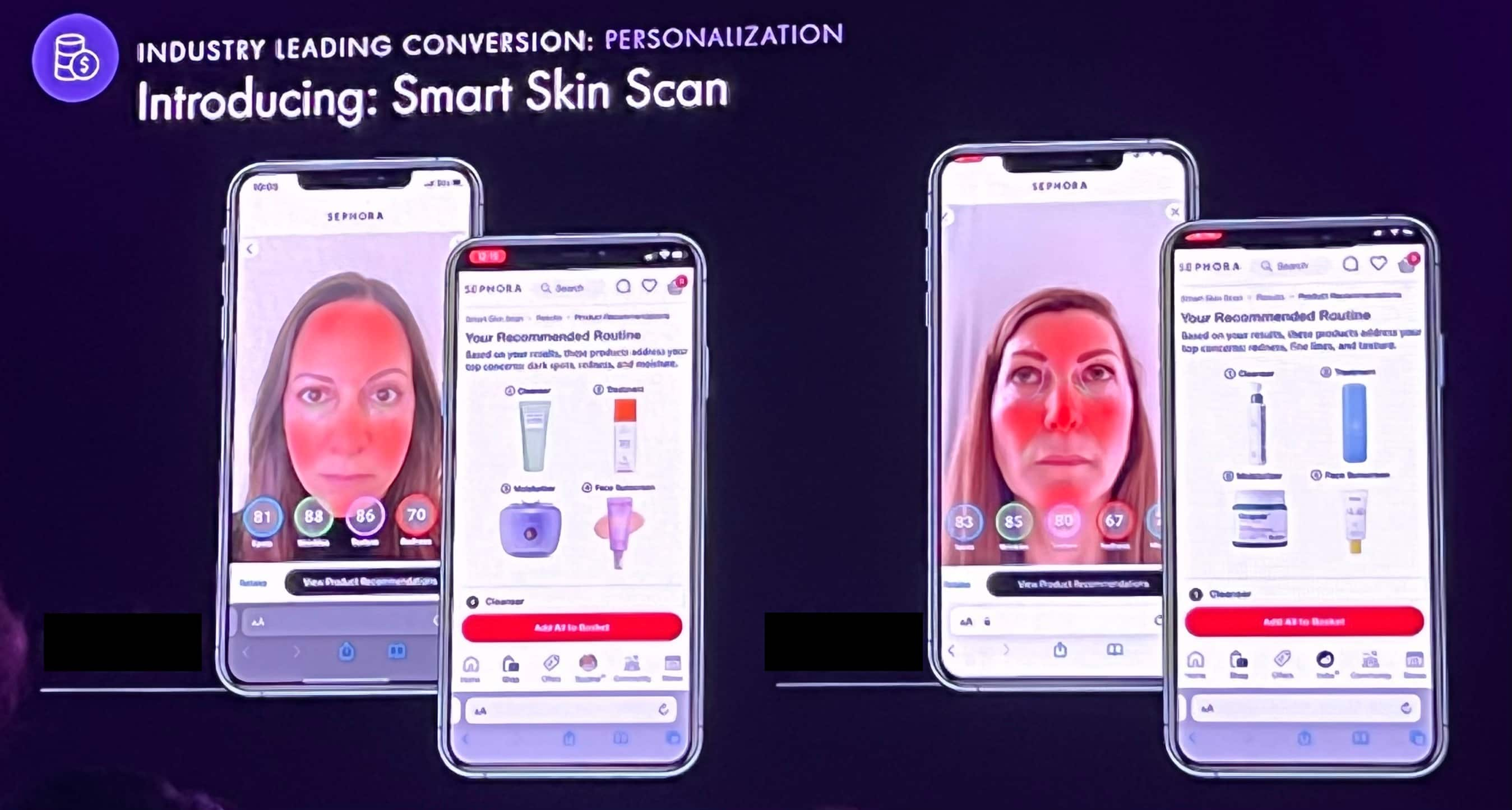
Sephora’s Smart Skin Scan
Almost immediately after Sephora revealed its plans, Ulta announced its partnership with Haut AI, incorporating personalized skincare diagnostics at the store level. One month after that, Haut AI launched its newest product, SkinGPT, which uses generative AI to visually simulate the effects of products based on a combination of a personalized quiz plus the brands’ clinical data.

Visual from Haut AI press release
In the same quarter, Galderma launched FACE by Galderma, an interactive consultation process that will show patients potential results of cosmetic injectables, developed in partnership with Crisalix, a pioneer in 3D, virtual reality and augmented reality aesthetic simulation with AI at the core.
At last month’s Cannes Lions—undoubtedly the biggest event in the advertising and marketing industries—beauty brands were front and center sharing how they’re applying AI across all areas of the business.
Leadership from most major brands and corporations—including The Estée Lauder Companies, LVMH, L'Oréal and more—were there highlighting the way their organizations are leveraging data and AI to shape the future of their businesses.
Jane Lauder, Executive Vice President Enterprise Marketing and Chief Data Officer, shared Lauder’s ongoing approach combining “math and magic,” where the math is data and the magic is the creative marketing approach their team brings to driving innovation across product, experience, and campaigns. Lauder highlighted how the company recently digitized its creative and product archives, creating vast databases that can be analyzed and remixed to generate new ideas for everything from campaigns to product concepts.

Nicola Mendelsohn, left, and Jane Lauder, right, have a fireside chat at Meta Beach during this year’s Cannes Lions.
Angelica Munson, Chief Digital Officer at Shiseido, talked about how AI is already embedded in many of their practices—from its Skincare Advisor tool to the most recent initiative analyzing data points from user-generated content to inform its product innovation pipeline down to the shade level.
Finally, just last week direct-to-consumer brand Prose, known for its customizable haircare, entered the skincare market with their AI-powered line, which is fully customizable based on a user-led online consultation. By generating custom formulations tailored to individual needs, generative AI can provide consumers with products that are precisely suited to their unique characteristics and desired outcomes.
For brands with a rich history and extensive historical data, AI offers a new way of making sense of it and identifying ways of creating something new out of something already done. For new brands, AI will unlock opportunities to optimize product and customer experience. For brands that don’t exist … well, AI can help you decide what you’ll become. For founders and creators, these tools have essentially bulldozed barriers to entry (like technical expertise and capital requirements), ushering in a new era of possibility.
Unlocking the Power of Generative AI
While hyped headlines focus on groundbreaking applications for AI, that may be costly or time consuming. Generative AI enables users to quickly generate new content based on a variety of inputs. There are numerous applications that are completely free and implementable immediately that can help you maximize efficiency and deliver an even better customer experience, and potentially an even better product. Here are some simple examples on how to start using generative AI today—including product innovation, creative process, and customer experience.
It’s worth noting that while there are only a few major AI platforms that exist (the largest ones being OpenAI, Stable DIffusion, and Hugging Face), there are tons of companies building products on top of their APIs. The real unlock comes when you leverage the power of these open APIs combined with your own data or IP. None of the examples here do that and are using fairly basic prompts (I’ve since experimented with much more detailed training,) so just imagine the vast realm of possibilities.
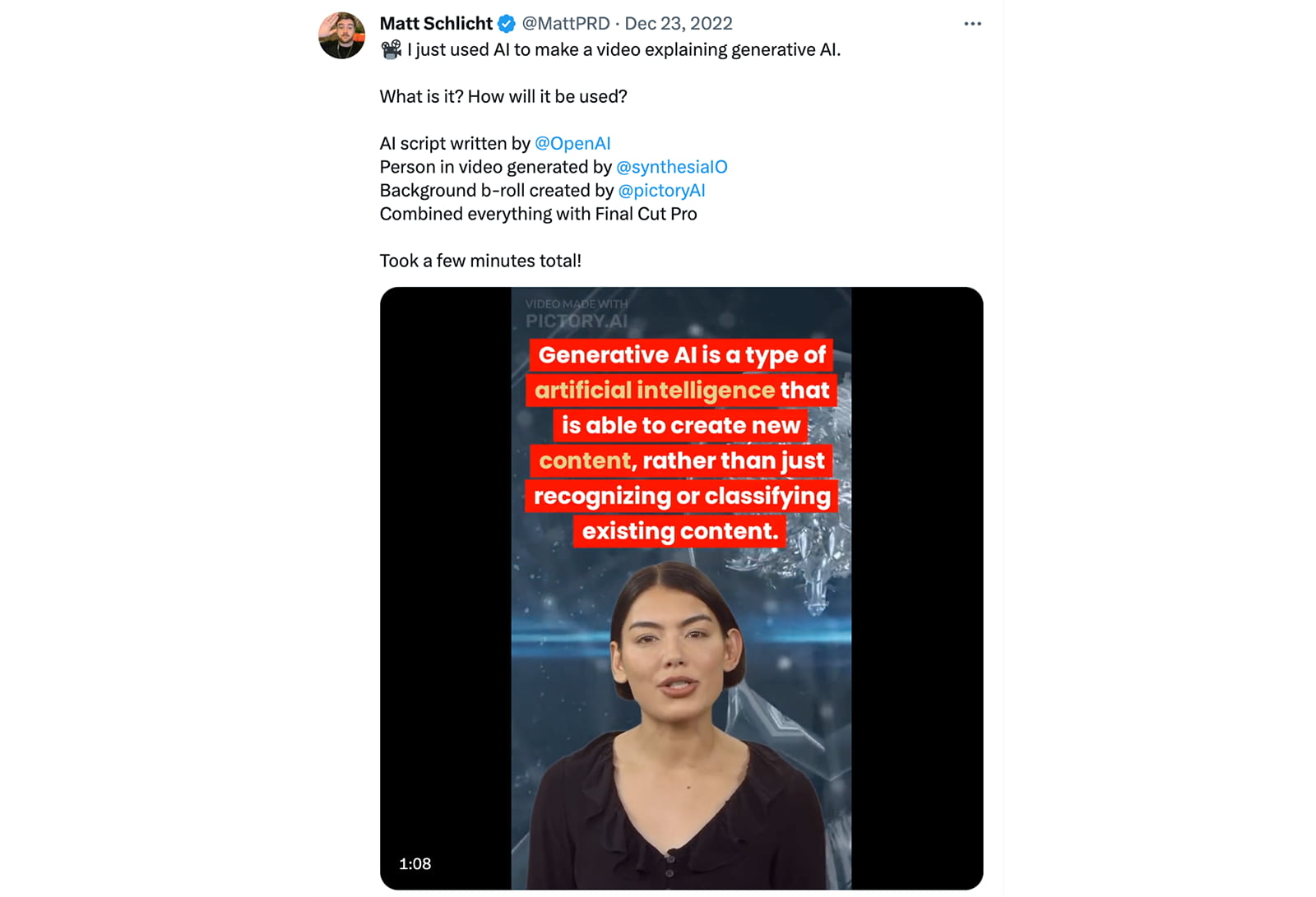
A quick example of how to combine various generative AI tools to create a video explaining generative AI
AI for Product Ideation, Research, and Development
Beauty brands are constantly innovating. Normally, product innovation begins with either an idea for a new product or an identified white space for a product to fill. AI can help speed up either of these processes.
First, if there is already an idea, AI can help vet the idea. There are a lot of specialized tools but ChatGPT is probably the easiest—and my personal favorite. The downside? Limited knowledge beyond 2021. Still, considering it’s ingested most of the internet, more upside than downside.
Teams can now ideate entirely with ChatGPT. The more specific the prompt, the stronger the results. Moreover, you can train these models—meaning, the more you and your team talk to ChatGPT about your business, inputting your IP, the more data points it has to give you ideas tailored to your company’s needs.
ChatGPT also has an understanding of basic market insights, and although unspecific, is invaluable to small brands that don't necessarily have access to streamlined data. For larger companies who have this data on hand, coupling these data sets with ChatGPT can save valuable time and resources spent on competitive and market analyses.
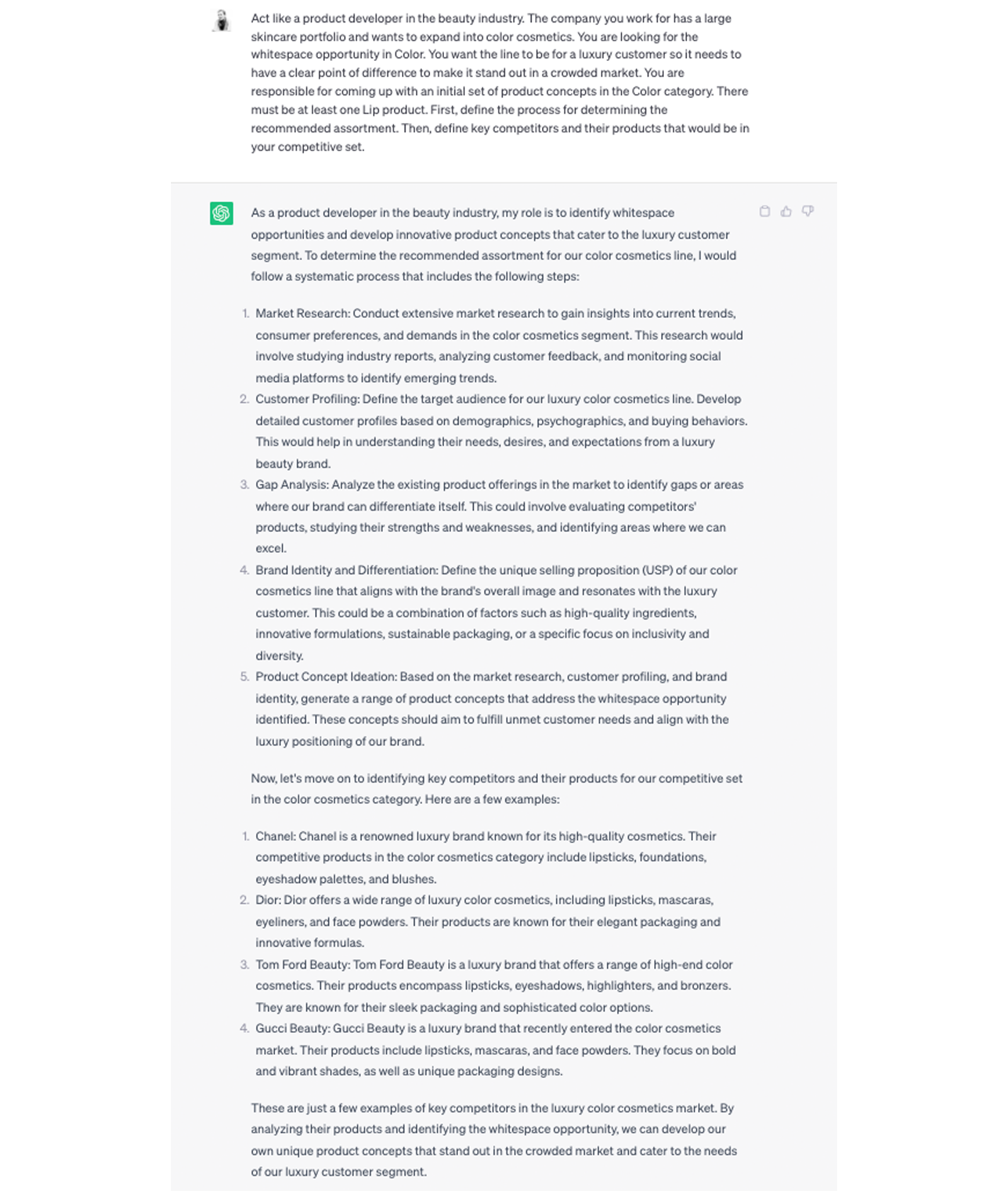
Example ideation with ChatGPT. This was a fairly basic prompt, but the more detail you give, the more you can train it how to think.

The result of the ideation with ChatGPT taking a consumer centric approach.
There are also tools such as IdeaFlip and Ideas AI, which use natural language processing to help generate and prioritize product ideas, allowing brands to quickly and easily identify the most promising concepts.
L'Oréal’s Idea Lab uses AI algorithms to identify potential gaps in the market and generate new product ideas that are tailored to specific customer needs. Brand Agency London, home of global beauty brands Ciaté London, Lottie London, and I Am Proud, is also leveraging ChatGPT to rapidly generate ideas and streamline workflow. Sephora uses AI-powered tools to analyze customer feedback and generate briefs that are tailored to specific customer needs, which can be infused into product copy.
AI can also help with ingredient selection. Companies like L'Oréal and Novi are using AI to power ingredient databases and manage chemical data from suppliers at scale. Other platforms like the Good Face Project utilize AI to help global cosmetic companies with both formulation and regulatory compliance. As an alternative, brands can also leverage ChatGPT for ingredient insights and profiling.
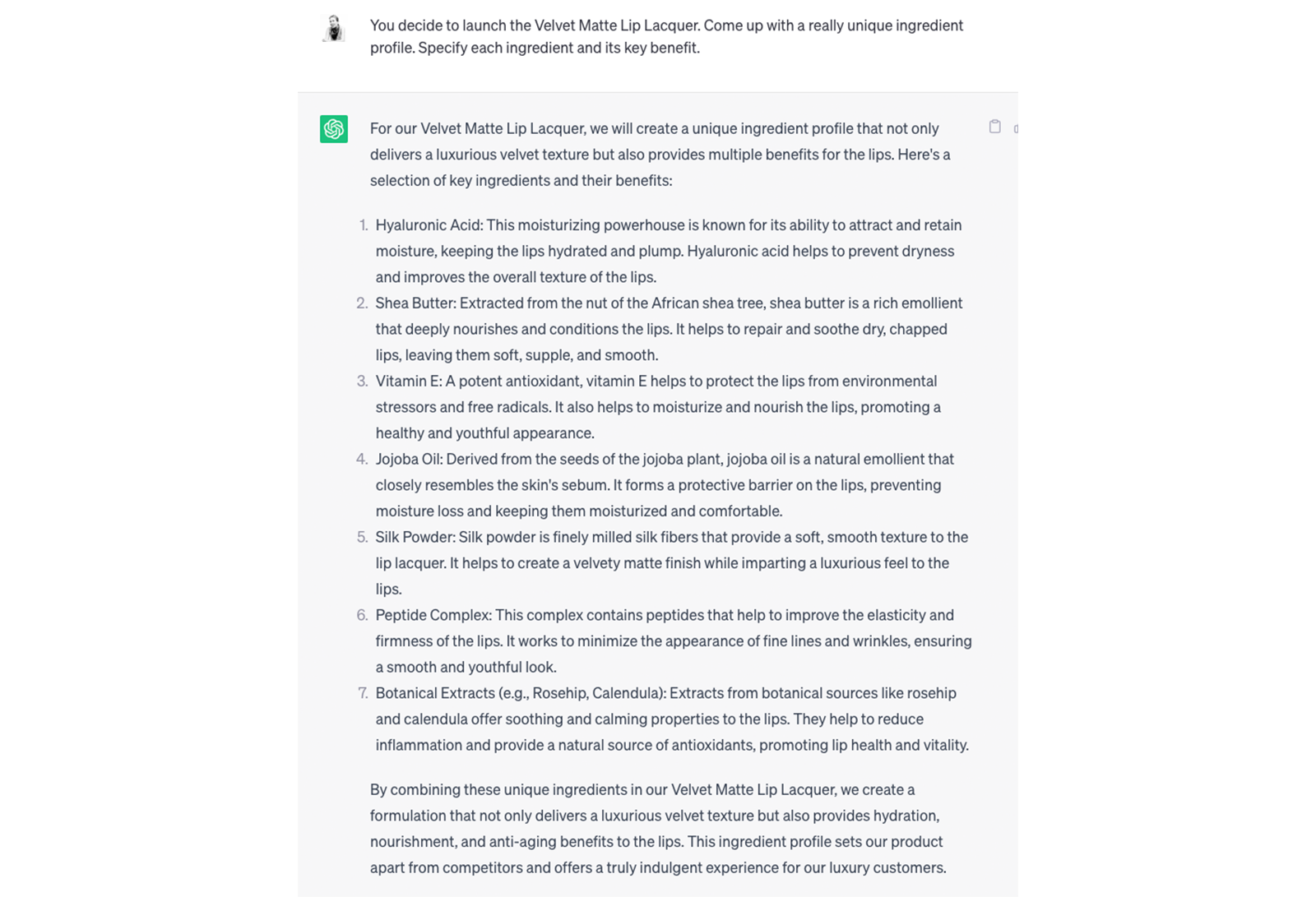
Another example from ChatGPT; not groundbreaking, but definitely a useful step.
AI for Creative Process and Development
Once you’ve got a product idea and concept, AI is a powerful tool for concepting creative campaigns. It’s easier than ever to have AI generate product assets, from packaging to visuals to copy. An example is a new luxury lipstick launch. Using the concepts from the ideation session with ChatGPT, it becomes much easier to create specific visual prompts.
Tools like Midjourney and DALL-E use AI algorithms to generate visual designs and images, allowing brands to rapidly concept packaging design directions. You can even use these tools in combination with each other to optimize your prompts, improving the results. Earlier this year, Midjourney introduced an image to text option, which can generate a prompt from an image. Optimize the prompt using ChatGPT and watch what happens.
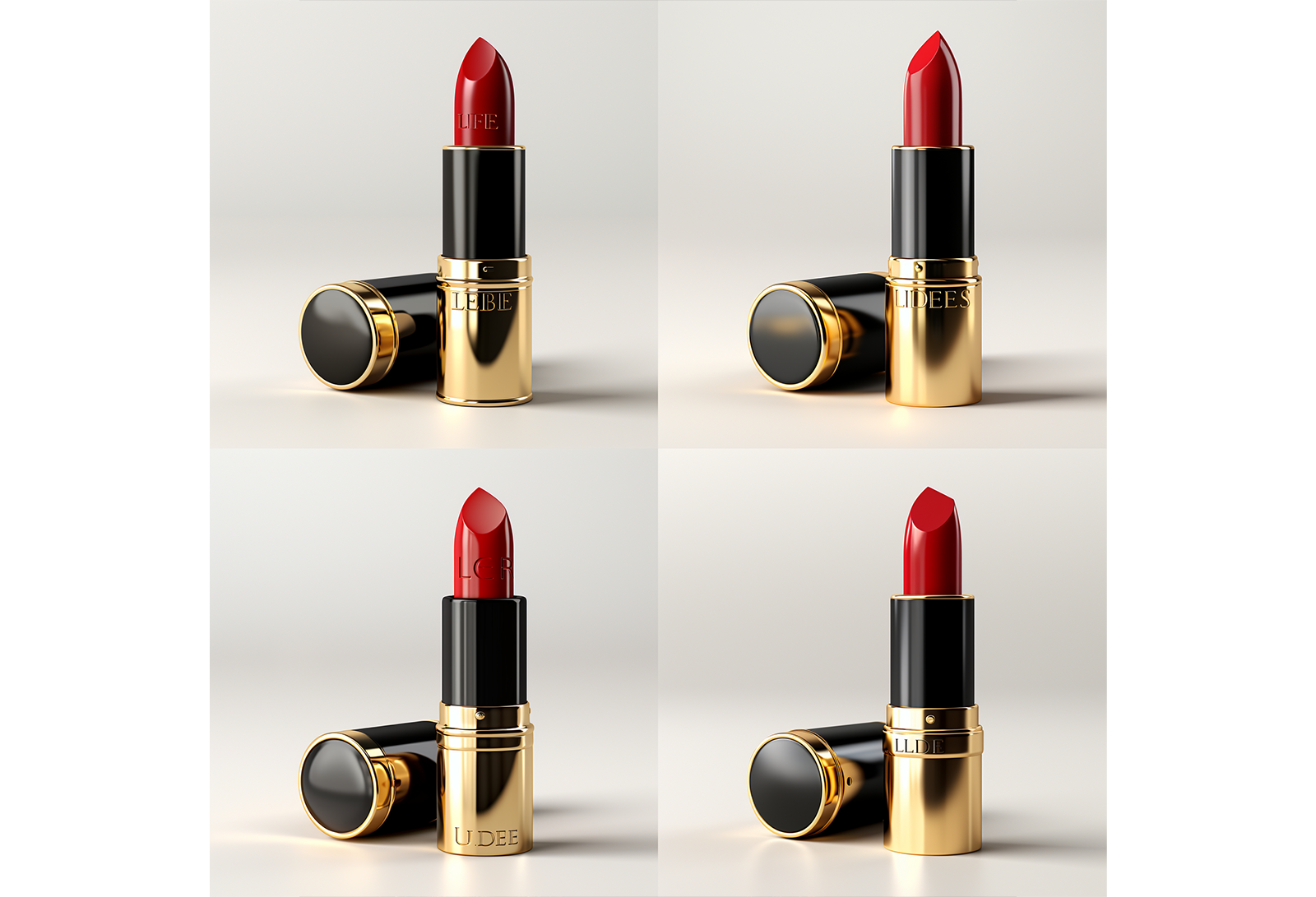
An example packaging concept prompt in Midjourney.
Once the design direction is aligned, these same tools can help with campaign concepting and product photography. Flair AI is a tool specifically for branded product imagery, but Midjourney is usually more effective.
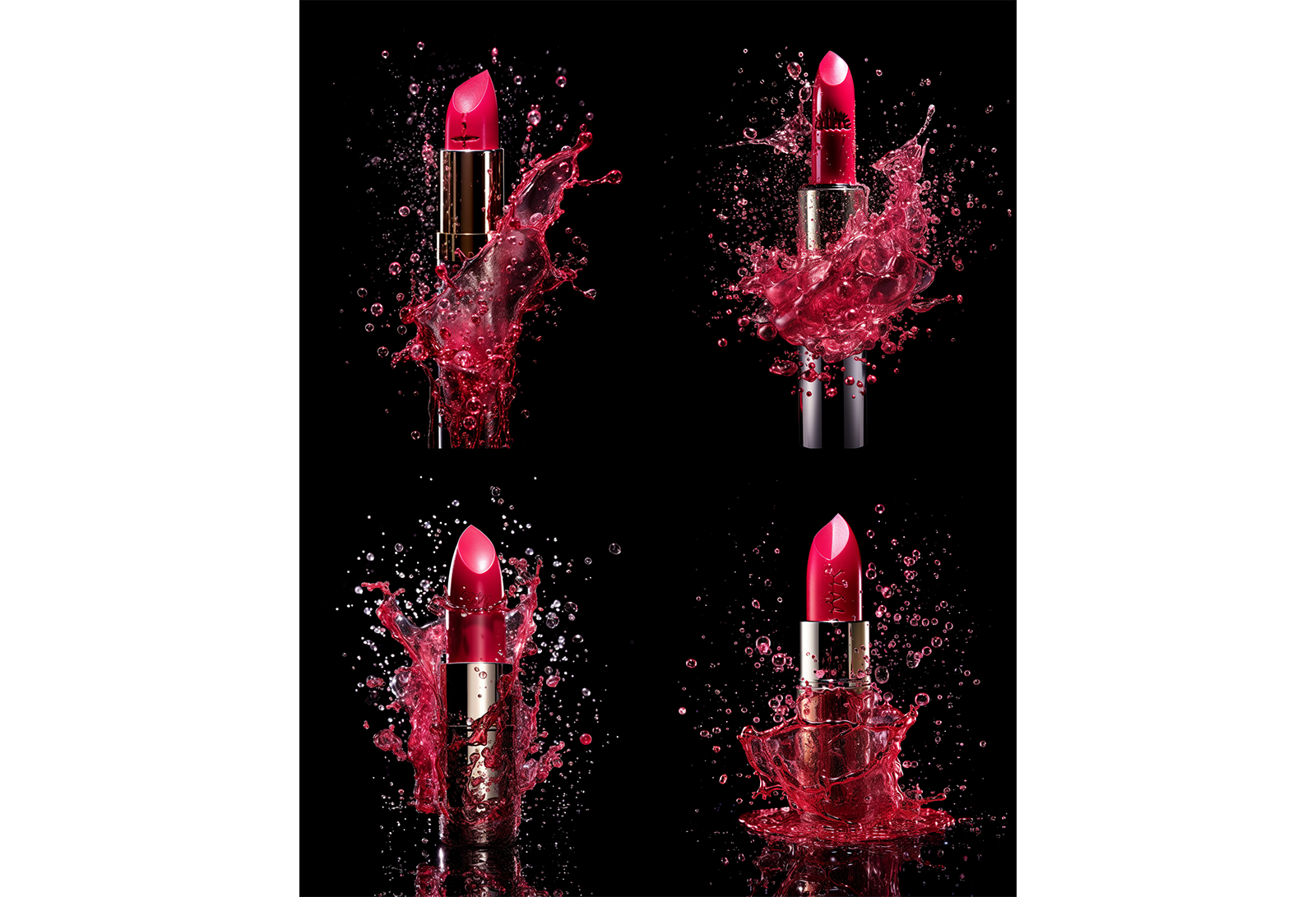
Stylized product image from Midjourney
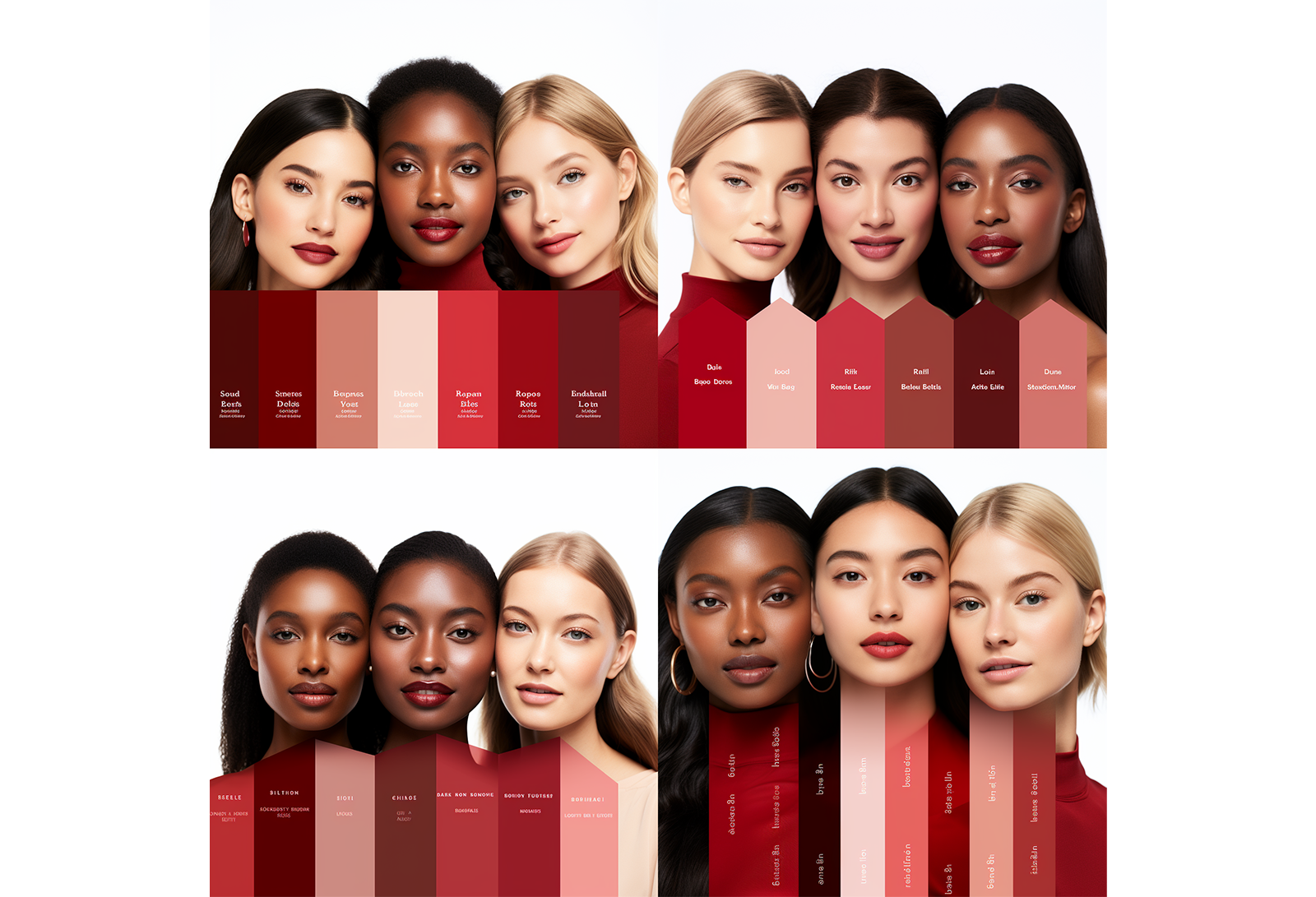
Campaign image from Midjourney
Tools like ChatGPT and Jasper can help generate product descriptions and other marketing materials, allowing brands to quickly and easily create compelling product pages and marketing campaigns. Jasper can format copy in a variety of different ways, from blog posts to web descriptions to Meta ads.
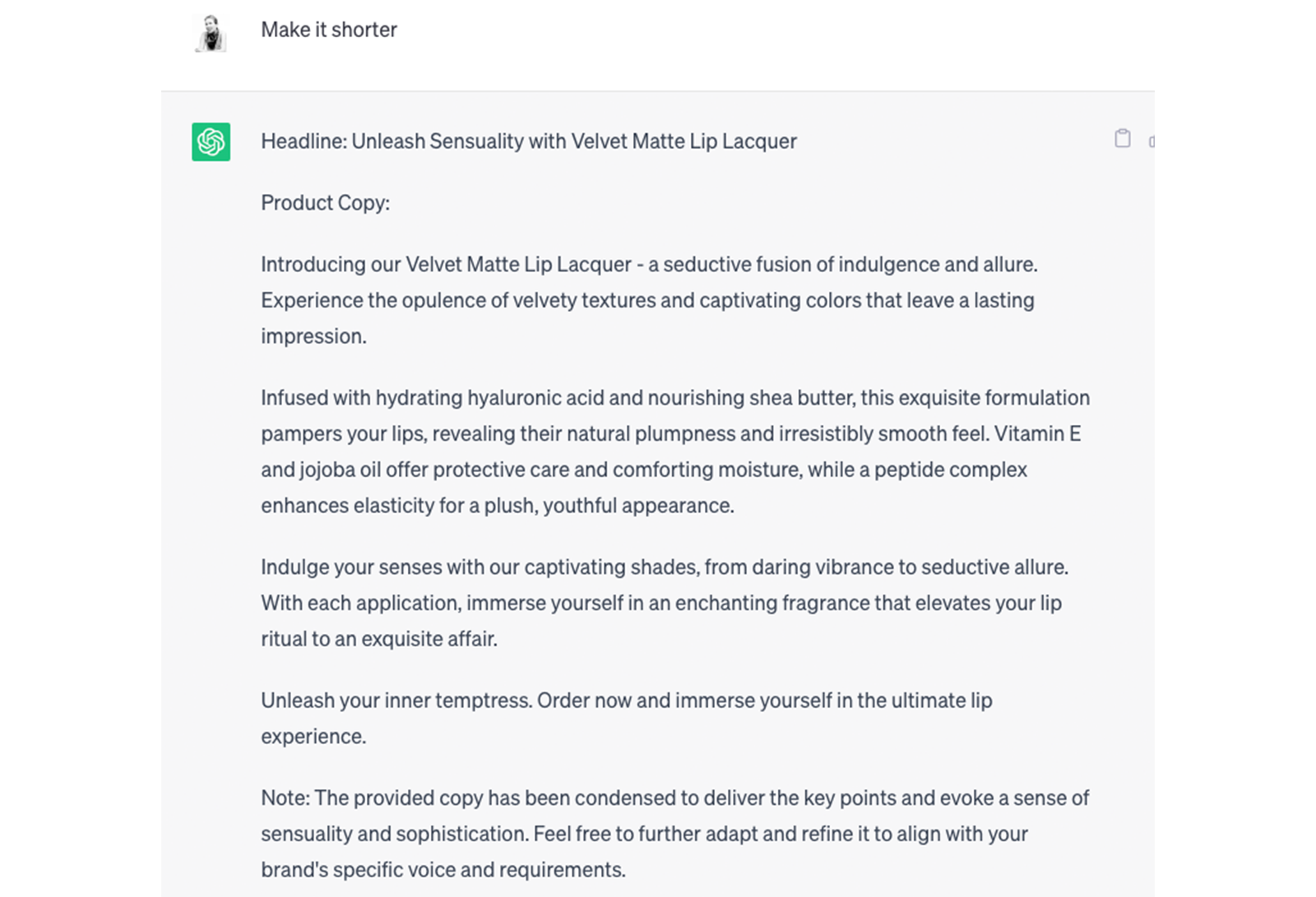
A first pass at product copy, from ChatGPT
For fun, ChatGPT reimagined this entire concept to make it more appropriate for a Gen Z consumer. That feedback was then fed back into Midjourney. This took about three minutes. The results?

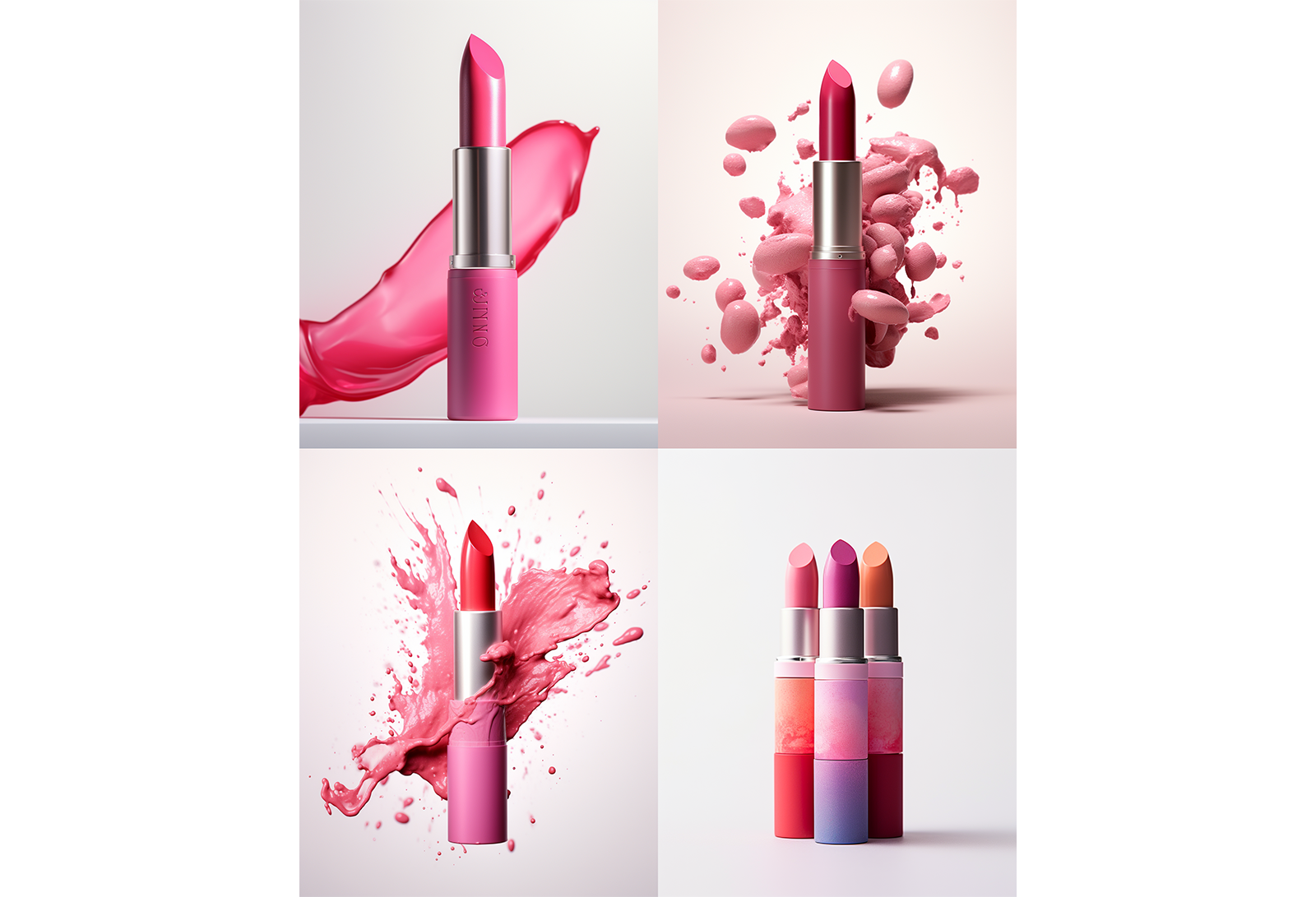
Stylized product image results from Midjourney
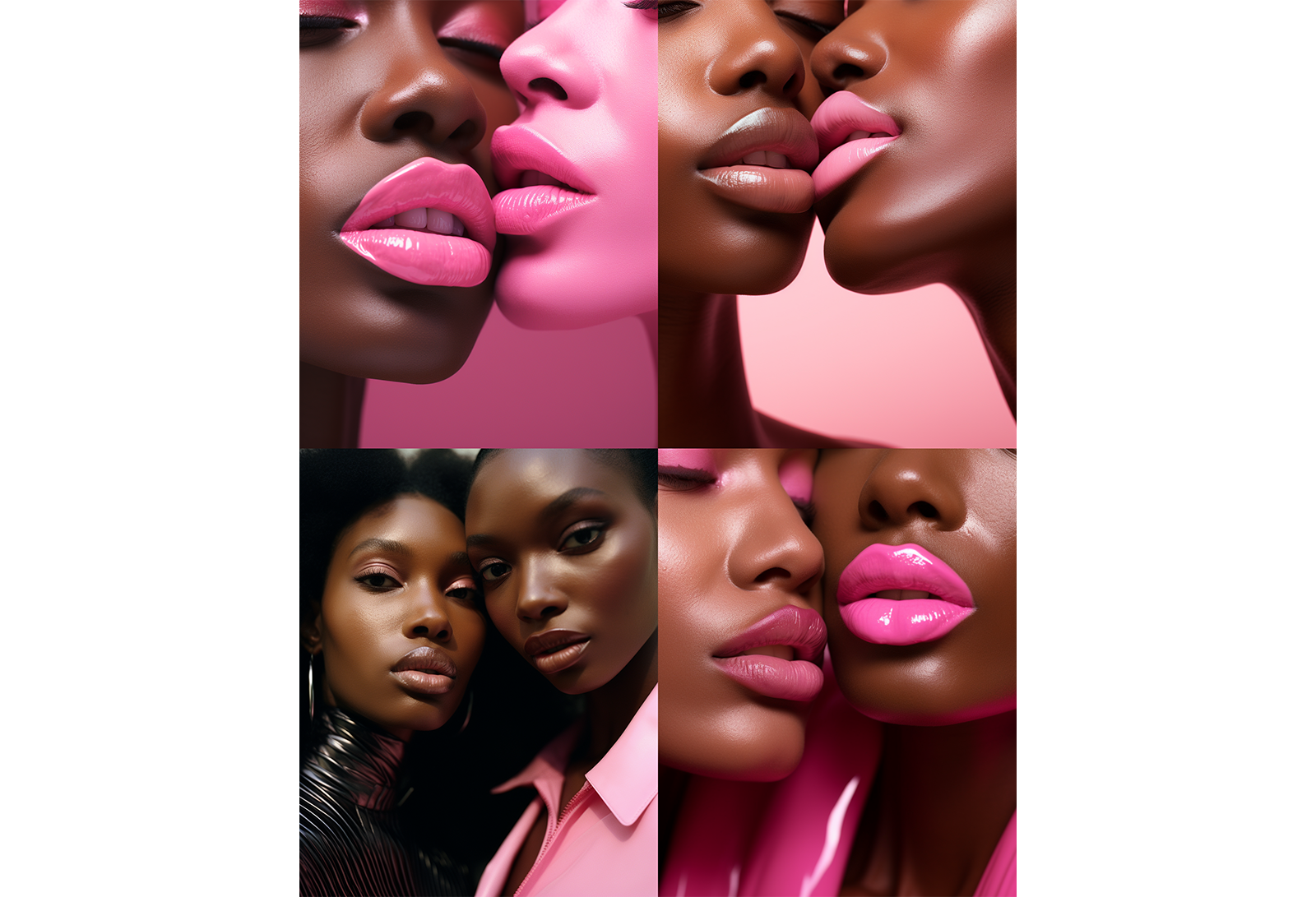
Campaign image results from Midjourney
AI can also be used to create how-to and product video content. Without going into too much detail, it’s possible to use tools like Synthesia for virtual actors and voice-overs, Soundraw for AI generated music, and Runway for piecing together one streamlined video. Canva has also released drag and drop video capabilities that make the process even easier.
AI tools make the content ideation and creation process significantly faster, enabling brands to quickly iterate and generate new content constantly, further optimizing performance and feeding the ever-demanding consumer.
The real unlock, though, is in harnessing the huge data investment made by these companies and then incorporating your own data. By developing bespoke AI models that learn from your company's unique data sources, you can achieve not just efficacy, but resilience. Imagine incorporating your brand’s tone of voice guidelines into the above, plus any data you might have on top performing products.
By analyzing vast databases of trends, styles, and historical references, generative AI can suggest new and unique combinations, designs, and aesthetics. This can help professionals and brands push the boundaries of creativity, leading to innovative and trend-setting beauty looks.
Generative AI can even be used to develop a go-to-market plan and budget. Tools like these can help beauty brands analyze market data, identify target customers, and create budgets that will help them to launch their products. But remember, these results are based on general best practices and are not tailored to you or your business.
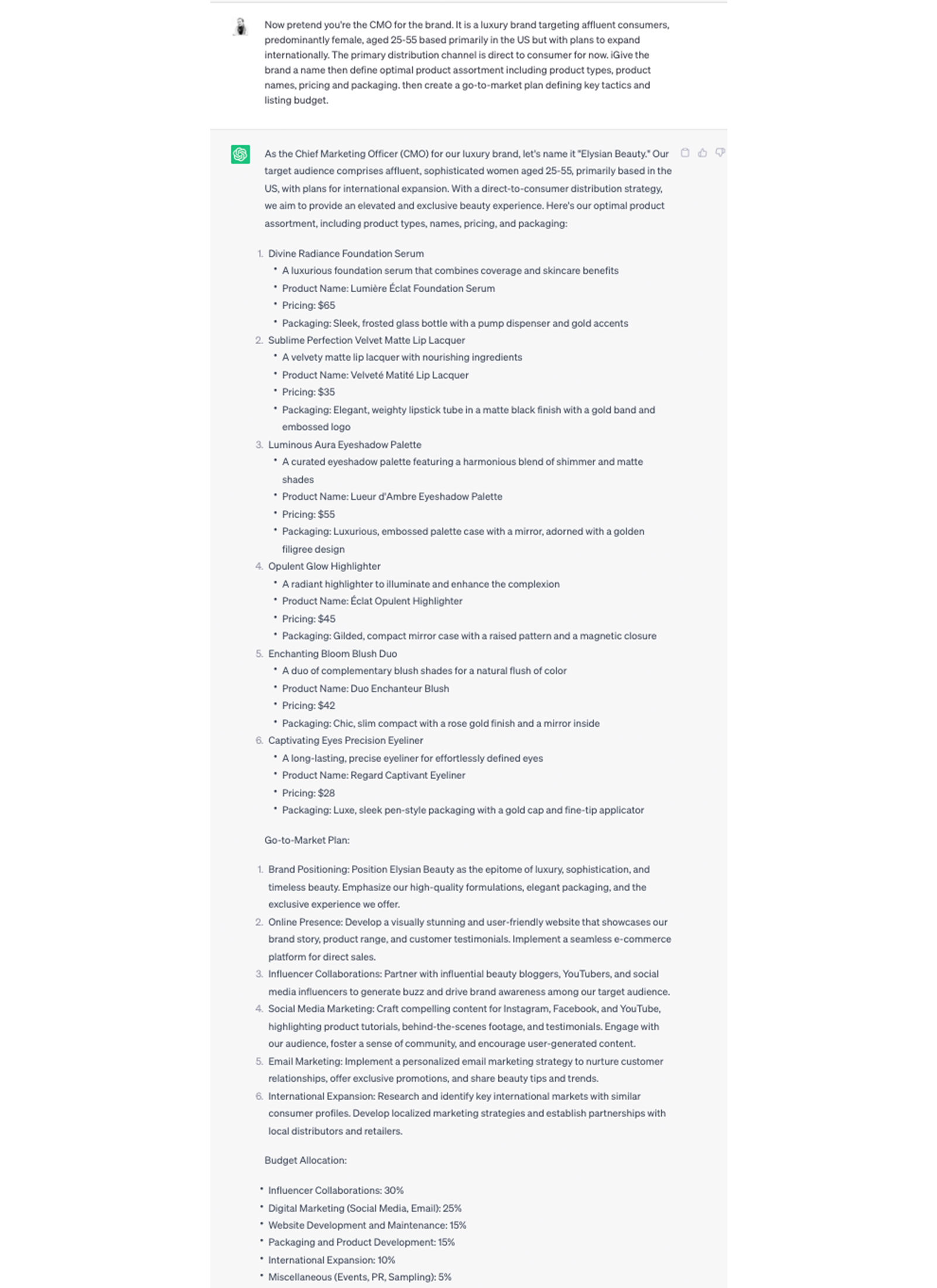
An example of a quick Go To Go To Market strategy from concept to execution by ChatGPT
AI for Enhancing the Customer Experience
FInally, generative AI makes it possible to create a completely personalized customer service experience by creating virtual beauty assistants that engage with consumers, offering personalized advice, tutorials, and product recommendations. These AI assistants can interact through various platforms like chatbots, apps, or voice-enabled devices, providing instant and tailored support to consumers, enhancing their beauty journeys, and fostering brand loyalty.
By analyzing feedback and FAQs received by your customer support team, you can create a highly efficient chatbot that effectively addresses the majority of customer queries, simulating an entirely personalized experience.
Generative AI algorithms can even analyze images of the skin to assess its condition, detect specific concerns, and recommend personalized skincare routines. For brands that bake this into their experience and have this data on hand, AI can continuously learn and adapt its recommendations based on user feedback and evolving trends.
Here Comes the Hard Part: Ethics
Any discussion about generative AI and ML warrants reflection on AI ethics, which at its most basic can be described as risk mitigation. Given the potential for automation bias, which is our tendency to look more favorably upon decisions made by automated systems like AI, and the vast scalability possible with generative AI, understanding the risks associated with using AI is a must. For this section, the expertise of Kassi Burns, a Senior Attorney at King & Spalding, was sought.
Algorithmic bias occurs when there are repeated outcomes of an AI system that creates inaccurate and unfair results to the detriment of a specific group or category. At its best, it creates incorrect outputs; at its worse, those incorrect outputs perpetuate already-existing social biases. The cause for these biases can be varied: the data source used to train the AI algorithm isn’t sufficiently diverse, the humans-in-the-loop used to train the AI algorithm are injecting their own biases into the algorithm, or there’s a lack of sufficient validation to ensure the AI outputs are as expected. Being mindful of data richness, accurate AI data training by human subject matter experts and sufficient validation can help minimize the likelihood of AI bias.
Intellectual Property is arguably the most obvious area of law impacted by the expanding use of AI. The U.S. Copyright Office has released guidance that generative AI content will not be granted copyright ownership privileges because human creativity is required to establish authorship. However, this analysis becomes more complicated for hybrid works, where some of the components are created by humans and others by generative AI.
Copyright law has another important intersection with generative AI: copyright infringement. If the source of underlying data used to train the AI algorithm includes copyrighted content without proper authorization from the copyright owner, then there is the potential for a copyright infringement claim.
Contract law and privacy law are similarly important, especially when it comes to how underlying data is being used and protected. From application terms and conditions and how inputs from users are used by the software company, to the preservation of confidentiality when formulating and submitting AI inputs, to determining how personal data about consumers is being used and protected—these are all important aspects to consider when using AI systems.
As the public’s access to and interest in generative AI tools has significantly increased, so has scrutiny grown by governing jurisdictions over the use of AI. New York City’s Local Law 144 focuses on the use of AI systems in employment decision-making and is set to go live July 2023. E.U.’s AI Act is working through the parliamentary process and could potentially be finalized by the end of this year. Even in the US, there have been Senate subcommittee hearings on the potential for an AI-specific act and attention by regulatory agencies regarding the use of AI in areas under their governance (e.g., EEOC, FDA).
Being aware of these evolving regulatory landscapes and accounting for ethical and legal considerations when using these systems are key for the successful implementation of generative AI solutions.
The Moral: Learn What Works, Leave What Doesn’t
Generative AI brings levels of innovation, creativity, and personalization to the beauty industry. While it’s not going to replace human creativity anytime soon, it’s quickly becoming an essential tool for speed, efficiency, and productivity. By leveraging the power of algorithms and data, it has the potential to transform the way beauty products are developed, experienced, and consumed—ultimately enhancing the journey for consumers to drive increased sales and retention. Organizations that embrace it will move ahead. Keep experimenting, be mindful of its shortcomings, and see what possibilities it unlocks.